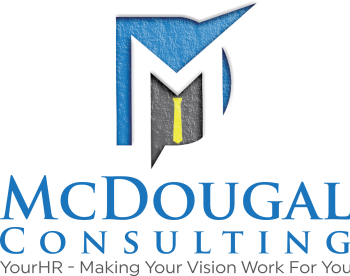Increases in productivity, job satisfaction, and customer satisfaction along with healthier workplace culture are some of the many benefits of strategic human resource management. But according to a survey by the Human Capital Institute, 90% of human resource leaders know they need to be more strategic, however, 49% don’t know what they need to do to get there. So, let’s start with the basics. What is strategic human resource management?
Strategic human resource management bridges the gap between the company’s vision, mission, goals, and objectives, and its human resources. It is therefore proactive in its approach to managing the human capital of a firm, thinking ahead to properly plan and meet its needs. Strategically managing human resources affects every function of HR from recruitment and selection, to training, assessments, and succession planning.
But just how does one go about being strategic in managing human resources? This simple 7 step process will help you lay the groundwork for achieving your business objectives through the utilization of human resources.
- Understand your company goals
Since strategic human resource management works to achieve the organization’s goals, it is therefore important for HR managers to thoroughly understand exactly what those goals are. Will you be expanding or scaling down business operations? You may need to hire or retrench staff accordingly. Will you be creating a new product? You may need to hire a team of product developers. Carefully consider the long- and short-term goals of your business as it will be crucial to formulating an effective HR strategy.
- Undertake a skills inventory
The only way to know what you need is to determine what you already have. A skills inventory takes stock of the knowledge, experience, and abilities of current employees to assess whether the existing personnel can achieve company goals. Skills inventories usually reveal gaps in essential skills needed for an organization’s success as well as uncover hidden skills of employees that can be utilized to achieve success. They are also a great opportunity to identify the employees who are interested in being trained in new skills or positions within your company. Is your junior accountant passionate and knowledgeable about graphic design? Consider relocating them to the marketing department. Are your sales representatives unable to give captivating sales pitches? They may need training that sharpens their presentation skills.


- Compare your company goals to your employee skills
Evaluating the skills of employees against the goals your organization is trying to achieve helps you recognize the barriers to success and formulate an action plan. This is the point in which plans must be made to sufficiently equip employees with the knowledge and abilities they need to enable your business to capitalize on opportunities and mitigate threats. Is the industry your business operates in becoming more technologically advanced? Consider training staff in software design or database management. Are your clients placing a higher value on service quality as opposed to service speed? You might need to conduct a refresher workshop in quality customer service.
- Evaluate your future human resource requirements
An accurate forecast of your organization’s requirements of its human resources will decide what new roles (or departments) are needed to achieve success, what skills employees must possess to perform the duties of the new roles, whether employees’ skills are being adequately utilized, and whether the present human resource personnel and practices can cater to the company’s growth. Will you be incorporating e-commerce into your company’s sales strategy? Consider relocating your customer service representative with a computer science degree to your new IT department. Will you be hiring a substantial number of employees as your business expands its operations? Consider moving from physical application forms and filing cabinets to online job applications and a human resource information system (HRIS).
- Determine the necessary tools for employees to perform their jobs
Though human resources management deals primarily with employees, ensuring those employees are well-equipped is also crucial. Perform an audit of the hardware and software to highlight the gaps in the tools needed for staff to effectively perform their duties and responsibilities. Will your sales team be shifting their focus away from telemarketing to email marketing? Ensure there are updated computer systems and a reliable internet connection. Do you plan to expand the size of your product warehouse? Consider purchasing a forklift for the efficient transportation of stock.
- Implement the human resource management strategy
At this stage, you should have a comprehensive understanding of your organization’s human resource needs and the action plan to meet those needs. This is the time to implement your plan to develop employees that will prepare your company for future growth. Consider beginning with placing current staff in positions that are best suited to their skills and personality and providing training to cultivate the skills they need and strengthen the ones they already have. Then, recruit, select, hire, and train additional employees in the areas of your company still in need of qualified team members.
- Evaluate the outcomes of the strategic plan
There must be a review to determine the success of the human resource strategic plan. This review will observe the progress made and highlight aspects of the plan that can be improved upon. The true determinant of success is whether or not the changes made are getting the company closer to achieving its goals. Are clients still complaining of long wait times? You may need to hire a few more customer service representatives. Have sales figures remained stagnant? The advertising and promotions team that is highly skilled in traditional media may need training in search engine marketing.
Strategic human resource management is critical to an organization achieving its objectives, but it is important to remain flexible even in planning. The business environment is constantly changing and consumer tastes are ever-evolving, therefore strategic flexibility is necessary to remain competitive in a changing world. Don’t become static and boxed-in by your plan. Instead, allow your plan room to adapt to the current business climate.
Do you still need help formulating your strategic plan for your company’s human resources? Contact us for a self-guided planning session or a full-service strategy design to formulate an HR plan that meets your needs.





